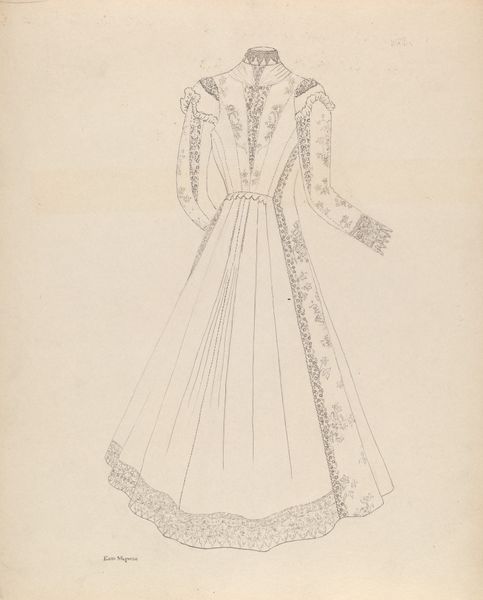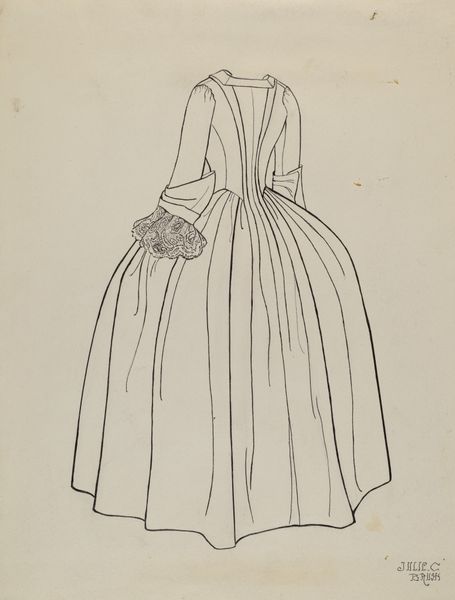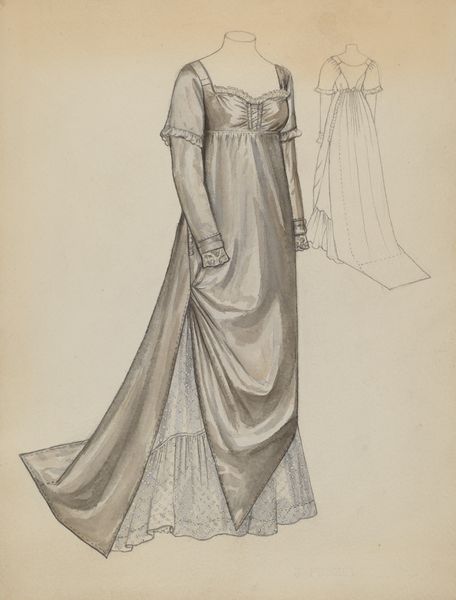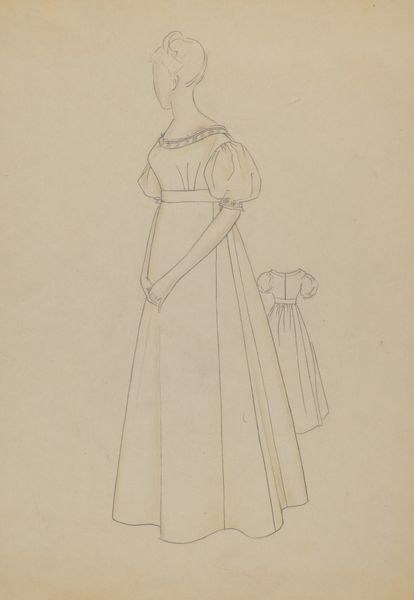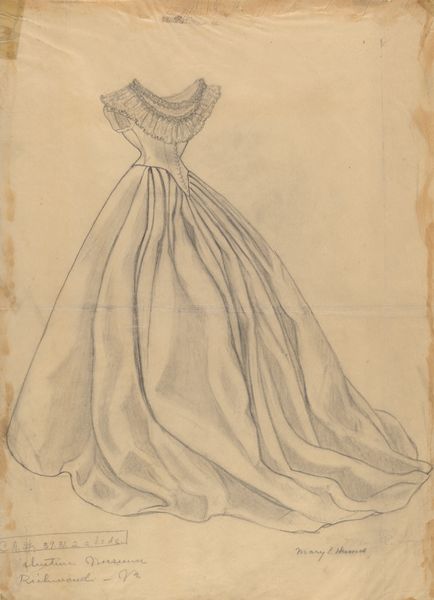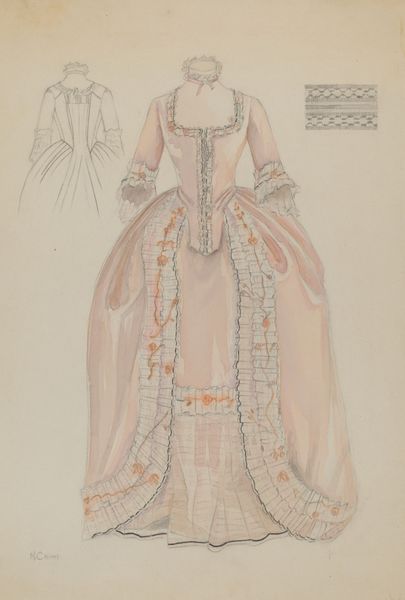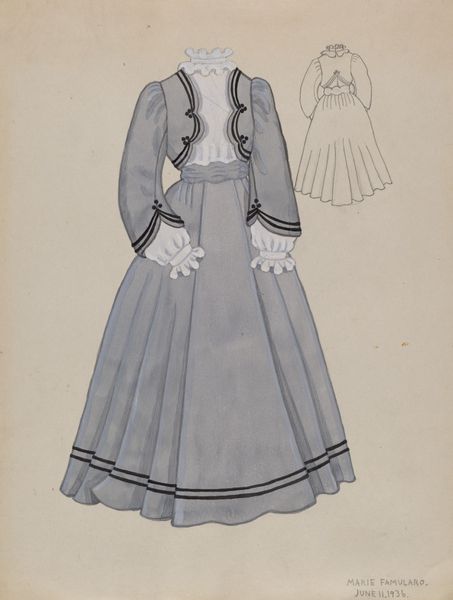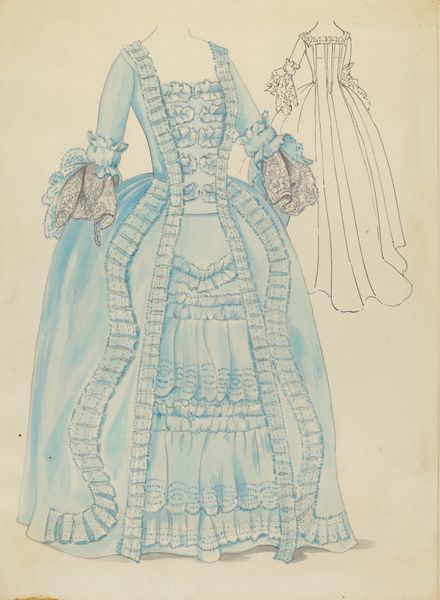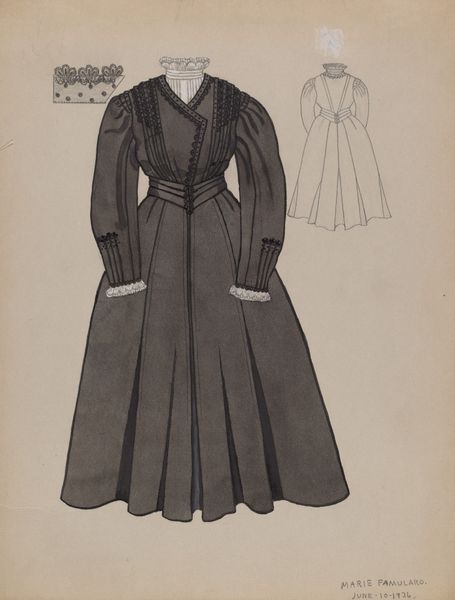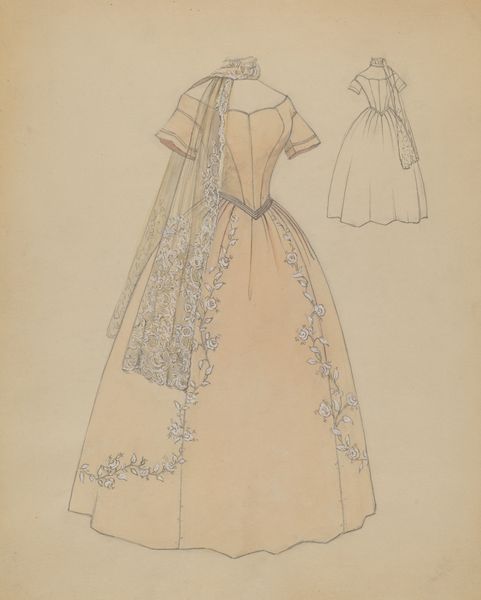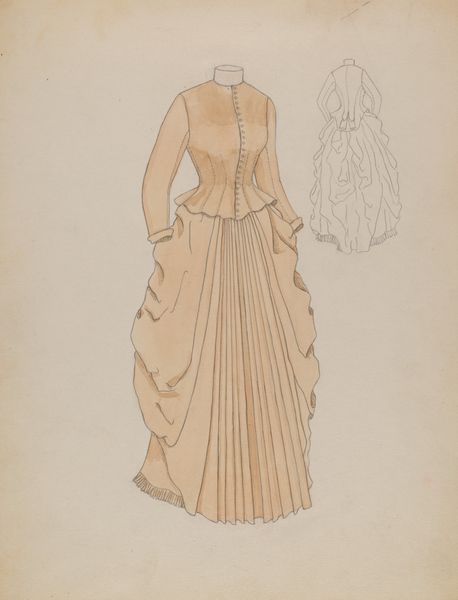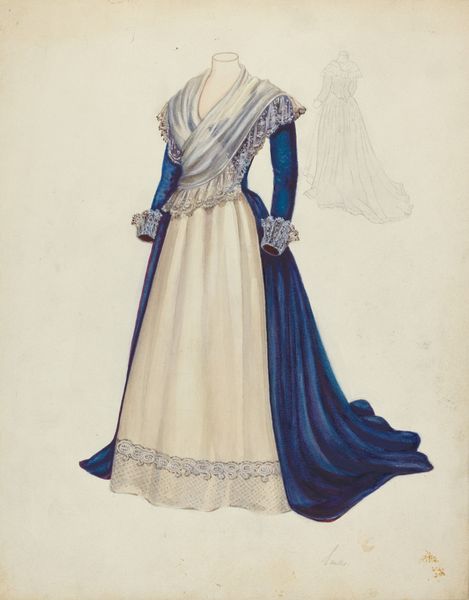
drawing, paper
#
portrait
#
drawing
#
figuration
#
paper
#
form
#
historical fashion
#
line
#
academic-art
Dimensions: overall: 37 x 30.2 cm (14 9/16 x 11 7/8 in.)
Copyright: National Gallery of Art: CC0 1.0
Editor: Here we have "Dress", a drawing on paper made sometime between 1935 and 1942 by Julie C. Brush. The lines are so clean; it gives the piece a simultaneously modern and vintage feel. What jumps out at you? Curator: It whispers of old photographs found in attics, doesn’t it? Think about the 1930s, between world wars. Fashion was shedding its flapper skin, yearning for elegance and… restraint. This isn’t just a dress; it’s a captured moment, an echo of societal shifts. Does it feel hopeful or subdued to you? Editor: Subdued, definitely. Almost like a memory fading at the edges. It also looks incomplete somehow. Curator: Precisely! The linework—notice how spare it is. Brush is interested in the essential form, not embellishment. I wonder, is she showing us the Platonic ideal of a dress? Or perhaps hinting at the dress’s absence of the wearer? Editor: An absence? That's an interesting idea! It does feel ghostly without a body to fill it. Curator: Fashion plates, particularly those on paper, exist at a remove. Unlike a painting they gesture to use more so than immediate contemplation. We often focus on clothing as a means of individualization, but consider its flip-side in industrial construction. How are the wearer, artist and object unified in these forms of mass-production? Does such activity enhance or dampen a personal spirit? Editor: I hadn't thought of it that way, as a blueprint for mass-production! Now I’m seeing layers of meaning, beyond just a pretty dress. It feels heavier, more significant somehow. Curator: The beauty of art! It invites us to question, reinterpret, and see beyond the surface. Each glance unveils another secret, or maybe, a shared experience reflected back at us. Editor: This was amazing, I’ll never look at fashion drawing the same way again! Thanks!
Comments
No comments
Be the first to comment and join the conversation on the ultimate creative platform.
